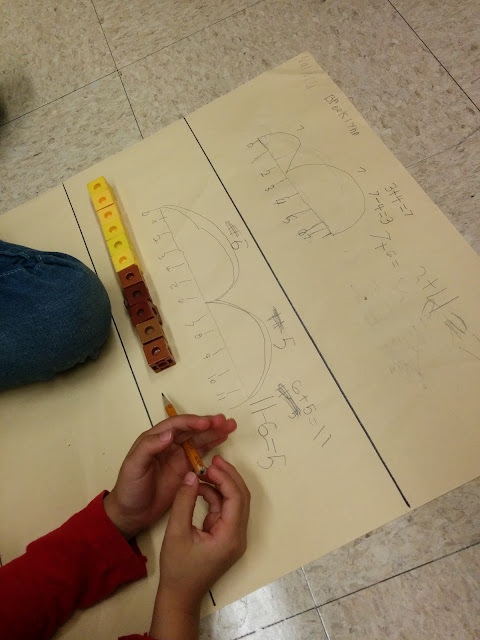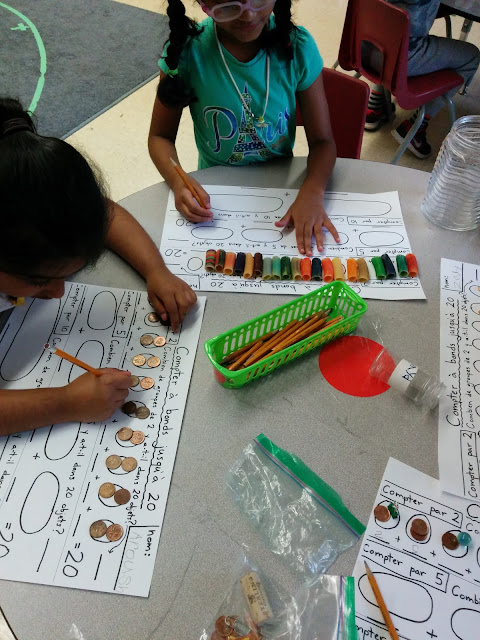We continued to talk about our families this week, and families in general. We read a book about a family in which the mom and dad live separately, and we read about staying with grandparents.
The kids presented their drawings of their families to the class. We used a document projector to make the drawings nice and big so everyone could see them well. Each student explained their drawing in French: "Here is my mom.", "Here is my dad.", etc.
We learned 3 more phonics gestures (f, s and ch) and our words of the week were with the sound "è". We looked at the various letters and letter combinations that produce this sound: è, ê, ai and et. In our Daily 5 reading time, we added "word work" and "listening to recorded reading" as activities. We talked through expectations for both and practiced doing them independently. I began reading with the kids in leveled groups, while the rest of the class does their Daily 5 activities.
We kept on telling the story of Grandmother's Old Fashioned Bed. We told it together in a circle, using gestures throughout the story to cue the words for ourselves. Then the kids wrote about their favourite part of the story using the scaffolded writing process we have been learning to use.
We sang a new song, about Terry Fox. Thanks for sending in those donations! The kids ran valiantly through the mist and rain on Friday. Find the song here: https://www.youtube.com/watch?v=nwpzXxU7VWk
We continued to learn about number lines. Students learned different ways to show an addition sentence (equation) on a number line. Many students still use fingers or counters to find the sum, and then draw it on the number line. They are still in the process of learning that the number line itself can be used as a tool to find sums. We did a contest, using a stopwatch, to see which took less time to add, counting on fingers or drawing on a number line. The number line won, but not by much. But I showed the students how a number line could easily answer 27 + 36 - try doing that one on your fingers!
We counted the 30 objects in our collections on the 30th day of school. We counted them in groups of 2, 5 and 10.
We also used the 30 objects to make addition sentences with a sum of 30.
We worked on solutions to another math story problem. This question involved addition, and I encouraged to kids to show their addition sentence on a number line as well.
We had our first Roots of Empathy session. Ruth Van der Weerd is our instructor and she told the kids about our planned visit from baby Tagore and his mother next week. We talked about what baby Tagore and his mother might feel and experience as they visit our classroom, and about how to keep the visit safe and positive. She asked the kids to predict what baby Tagore might be able to do at his age of about 3 months. We learned a welcoming song that we will sing every time baby Tagore and his mother come to visit. We await their first visit with eager anticipation!




































































